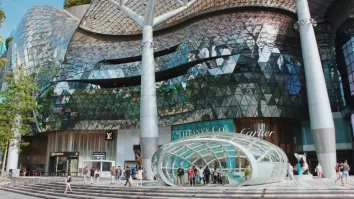GS1 2D barcodes enhance retail inventory and traceability
Enhanced data capabilities transform consumer and retailer experiences.
GS1 Singapore is leading a revolution in retail operations with the introduction of 2D barcodes that go beyond traditional product identification. Christopher Ang, CEO of GS1 Singapore, outlined the impact these barcodes are poised to have on the global retail landscape.
"Consider GS1 2D barcodes as the supercharged upgrades," Ang stated. Unlike traditional barcodes that only provide a product ID, these 2D barcodes act as tiny data vaults, storing extensive information from numbers to expiry dates and manufacturer details all in one compact square. "Imagine a tiny Data Vault holding tons of information, not just a product ID," Ang elaborated.
The benefits stem from the barcodes' ability to provide comprehensive data that bridges the gap between brands and consumers. "The barcodes unlock a new level of transparency, improved inventory management, better traceability and sustainability, all powered by richer data," said Ang.
Despite the promising future that 2D barcodes hold, transitioning from the conventional 1D barcodes presents certain challenges. Ang acknowledges the coexistence of both barcode types during the transition period but remains optimistic about the global adoption rate. He noted, "We expect that scanning adoption will grow at different rates around the world. However, one thing is certain, those that speed up this transformation the fastest, will be in the best position to unlock new, valuable capabilities and benefits."
To facilitate this shift, retailers must equip themselves with the right point-of-sale scanner technology capable of reading both 1D and 2D barcodes. Ang revealed that "Third party research indicates that 80% of retail points of sales are already equipped with scanners capable of reading barcodes." This figure is expected to surpass 85% by the end of 2027, aligning with GS1's ambition for universal 2D barcode scanning capabilities at retail checkouts globally.
"Regionally, we have Woolworths, a supermarket in Australia, implementing 2D barcodes and 7/11 Thailand, boosting safety and consumer satisfaction with 2D barcodes," Ang highlighted. In Singapore, various sectors from agri-food to healthcare supplements are integrating these barcodes for better product traceability and enhanced consumer engagement



















 Advertise
Advertise







